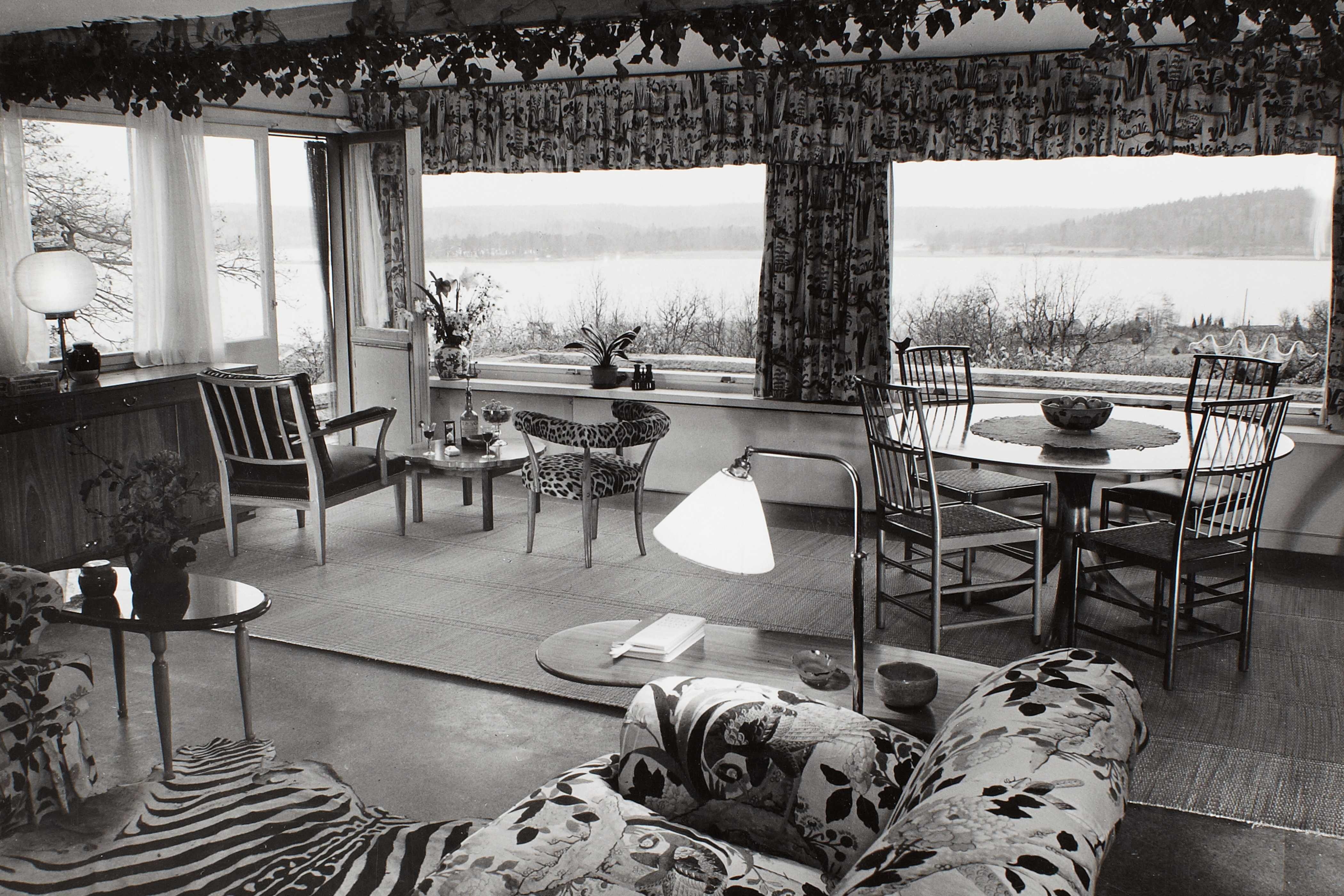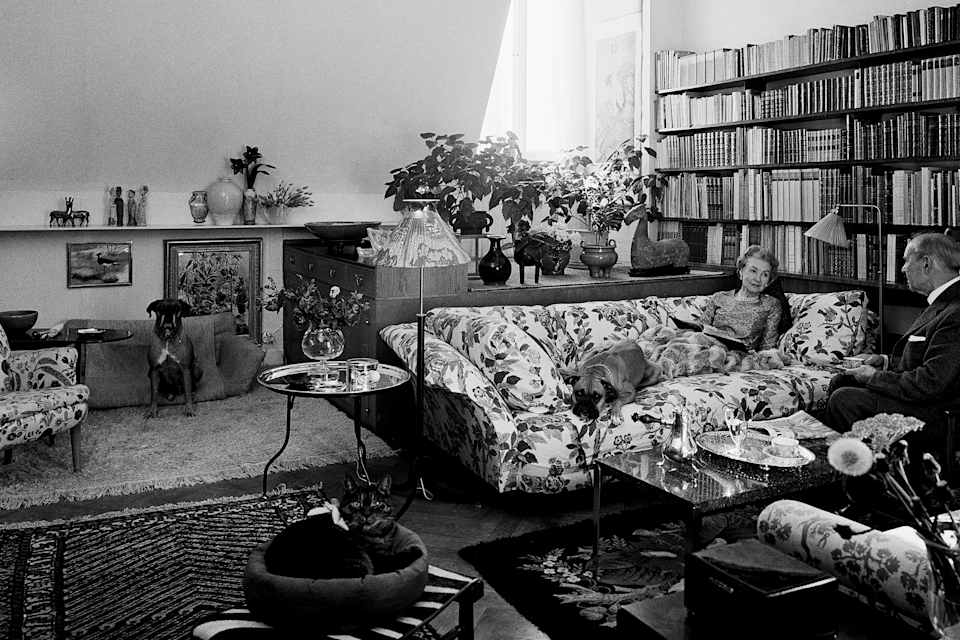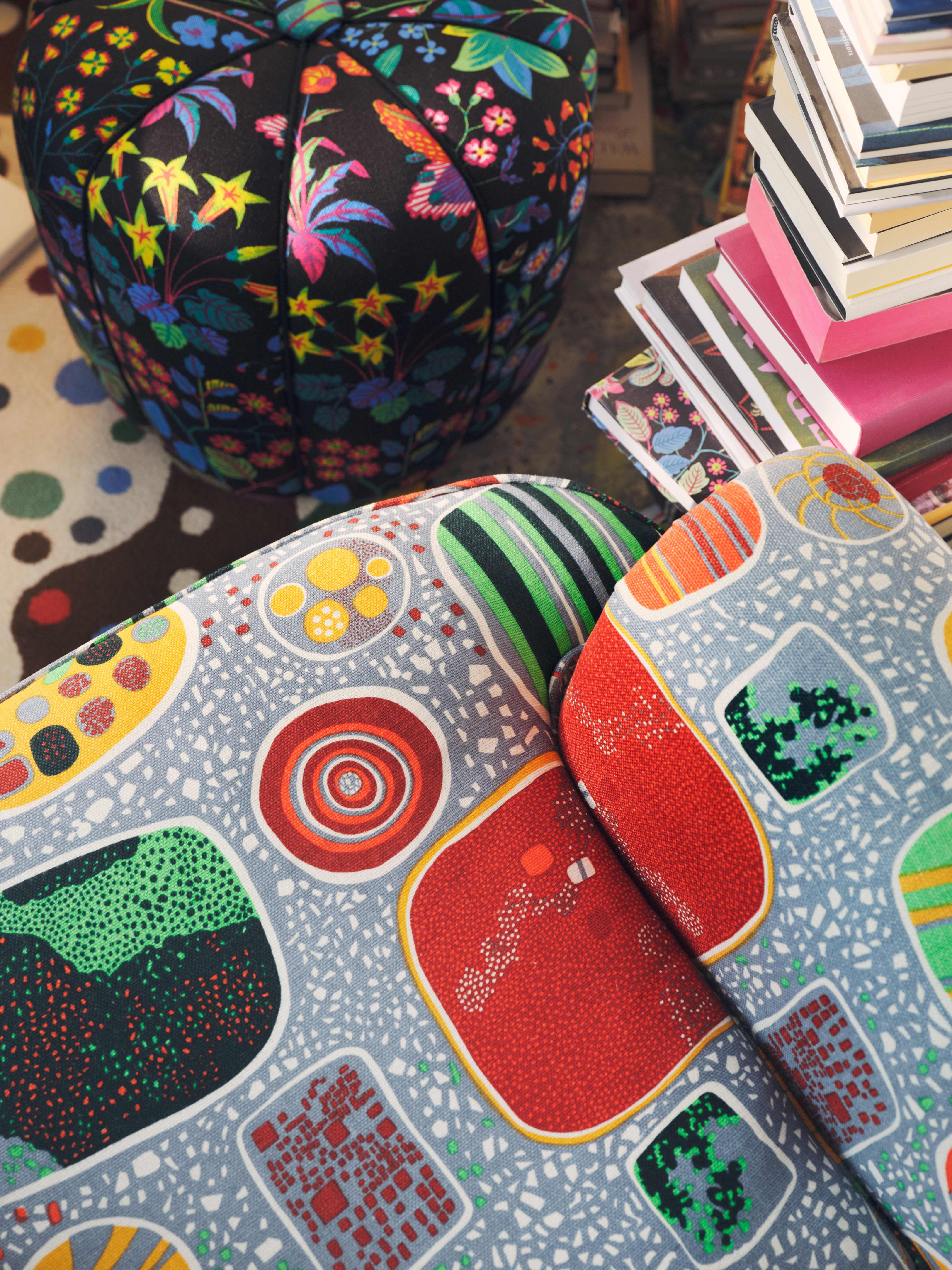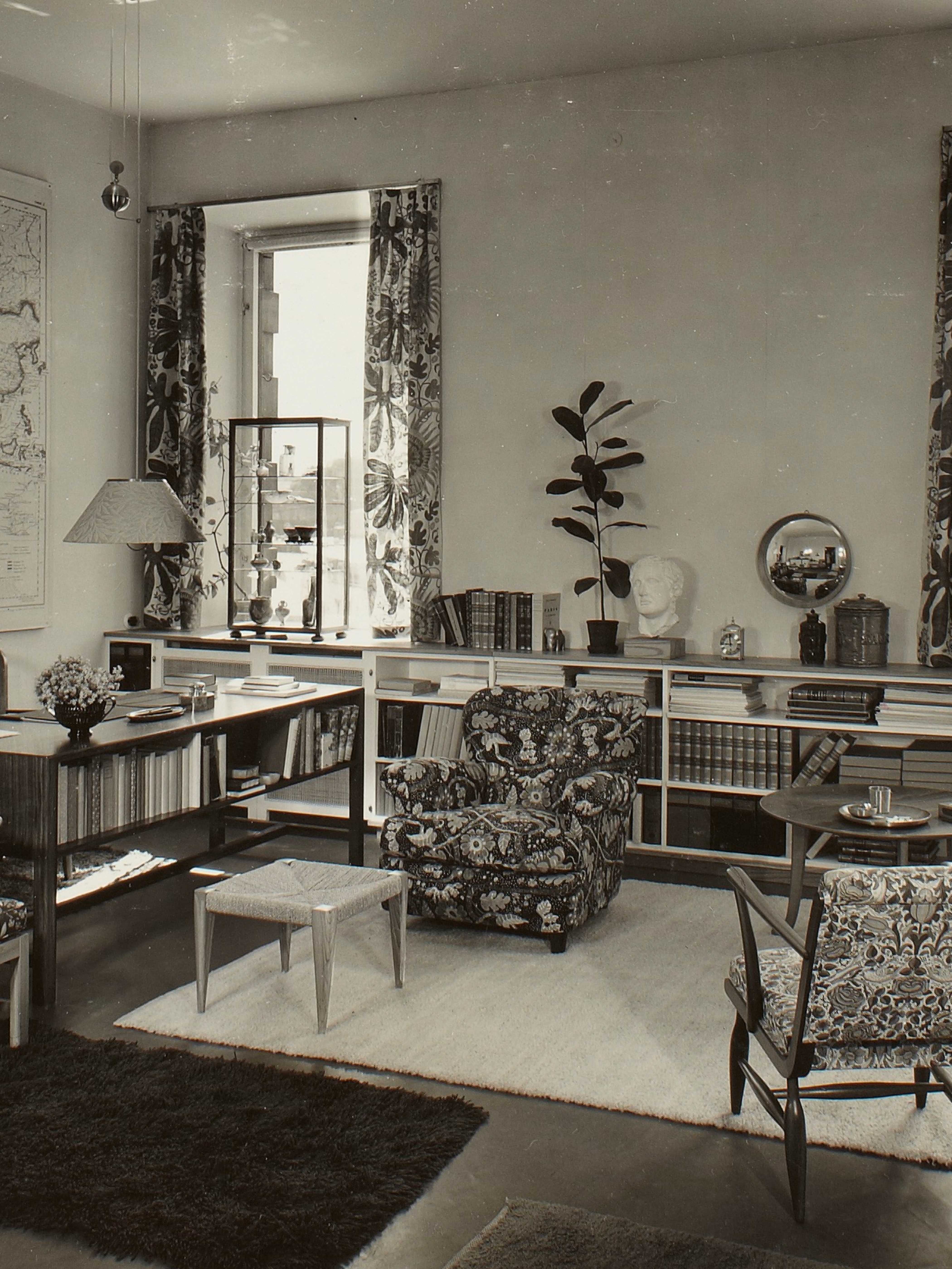Svenskt Tenn’s interior design philosophy
Svenskt Tenn’s unique design philosophy proclaims a forgiving approach to interiors that focuses on comfort and warmth. It is built on the assumption that different aesthetics, colours and patterns, whether old or new, will harmonise — if they are chosen according to your tastes.

The Austrian architect and designer Josef Frank’s human modernism in combination with Estrid Ericsons sense of artistry lay the foundation of Svenskt Tenn’s interior design philosophy. Together, they created a highly personal style — one that is both colourful and vibrantly patterned. One that boldly mixes high and low drawing references from all kinds of epochs and cultures around the world. The philosophy is not a science, but rather an approach, intended to create spaces that are inviting, personal and functional.
Josef Frank“It does not matter if you mix old with new, disparate furniture styles, colours, or prints. Things that you love will nevertheless fuse into a harmonious entity. Your home does not need to be planned or studied in detail, merely assembled of pieces that its inhabitants enjoy and love.”

Josef Frank’s philosophy
Josef Frank elaborated on his design philosophy in two articles that were published in the magazine Form, 24 years in between. The first article, “Rooms and Interiors” was published in 1934, the same year he joined Svenskt Tenn. It was the first time he ever put words on the ideas he’d become known for since the 1920s.
In the article he described many aspects he considered to be important for interiors. In the second article, published in 1958, Josef Frank continued upon his philosophy and dubbed it “Accidentism” or the “philosophy of chance”.

Photo, Svenskt Tenn archive
Rooms and interiors
In the article “Rooms and interiors” Josef Frank illustrated his thoughts on form and function. He highlighted the importance of human comfort and well-being. That furniture should be designed to suit the human body and that decoration should be flexible and adaptable according to needs. That no home is static but something that is alive and evolving with the ones living in it.
“The plain surface feels uneasy, a patterned one feels calm – as you are subconsciously affected by the slow process. Decorated surfaces demand time for observation, whereas a plain surface is quickly registered, and just as fast, you lose interest in it.”
In this text, Josef Frank also articulated his thoughts on the “Clarity of a Room” in which he stresses that the contours of a room ought to be visible to be pleasant. For example, he declared that furniture should be placed on tall legs so the line between wall and floor could easily be discerned. Further, he was in favour of white walls, since it allowed the freedom to add patterns in the form of textiles and rugs. Patterned surfaces were important in a room, as they would “break up cold geometric stiffness while filling the room”.

Accidentism
When Josef Frank in 1958 once again wrote in Form, he for the first time named the philosophy he had developed since his time in Vienna. He called it “Accidentism” or the “philosophy of chance”. He emphasised that our interiors should be shaped as if they had happened by chance, as that creates comfortable and pleasant environments. In essence, he meant that furnishings could be placed just about anywhere, as long as it was beautiful, and the owner had a personal bond to the objects.
“The living room, where one can live and think freely, is neither beautiful, harmonious, or homogenous. It is the result of chance, never to be considered finished and can always adapt to whichever needs of its inhabitants.”
Estrid Ericson’s Catechism of Interior design
In many ways, Estrid Ericson would embrace Josef Frank’s philosophy and eventually make it her own. In 1939, she articulated her own thoughts in a manifest of her own, the “Catechism of Interior design”. Here, she explained her ideas about colours, furniture choices and how to combine objects. Estrid Ericson also advocated for white walls, patterned textiles and furnishing flexibility as well as functional pieces, ideas she shared with Josef Frank, albeit imbued it with her own.
Estrid Ericson’s “Catechism of Interior Design” summarised in ten points
- White is the ideal wall colour. It makes a room feel larger, and provides full freedom to add colourful items and textiles. It is the textiles that determine the colours of a room.
- A home should be furnished sparingly, as we need free space to move around. The furniture in an interior should fill a function according to the needs of the inhabitants.
- A modern home consists of a mix of precious and cheap objects. They do not necessarily need to go together or be of the same aesthetic or style.
- Furniture should be light and easy to move around. Large and heavy pieces should be avoided.
- Every dining chair does not need to match, resting chairs and armchairs should be of different shapes and kinds, to suit different uses.
- Combining different kinds of wood in the same room is encouraged. To enjoy the natural beauty of wood, its natural colouration should be retained.
- The best lighting comes from floor lamps that can be moved around and be adjusted, this allows you to direct the light according to your needs.
- Fabrics, as opposed to furniture, are not made to last a lifetime. They can be replaced, which allows for greater freedom when selecting them.
- Mixing fabrics, patterns and prints is encouraged. If it is too coordinated the impression reads as stiff.
- We collect objects throughout our entire lives — they are what gives a home a personality. Our homes are never to be considered completed, but something we continuously build upon.
“We must not forget to cherish freedom within our homes, to not abstain from pieces just because they could jeopardise our aesthetic formalism. It is never a fabricated colour chart that gives a home its personality, but it is all the things one collects through life. All the things we once loved, alongside all the things we love today. — our homes are never completed, during our entire lives, we continue to build upon them.”

Photo, Svenskt Tenn archive




